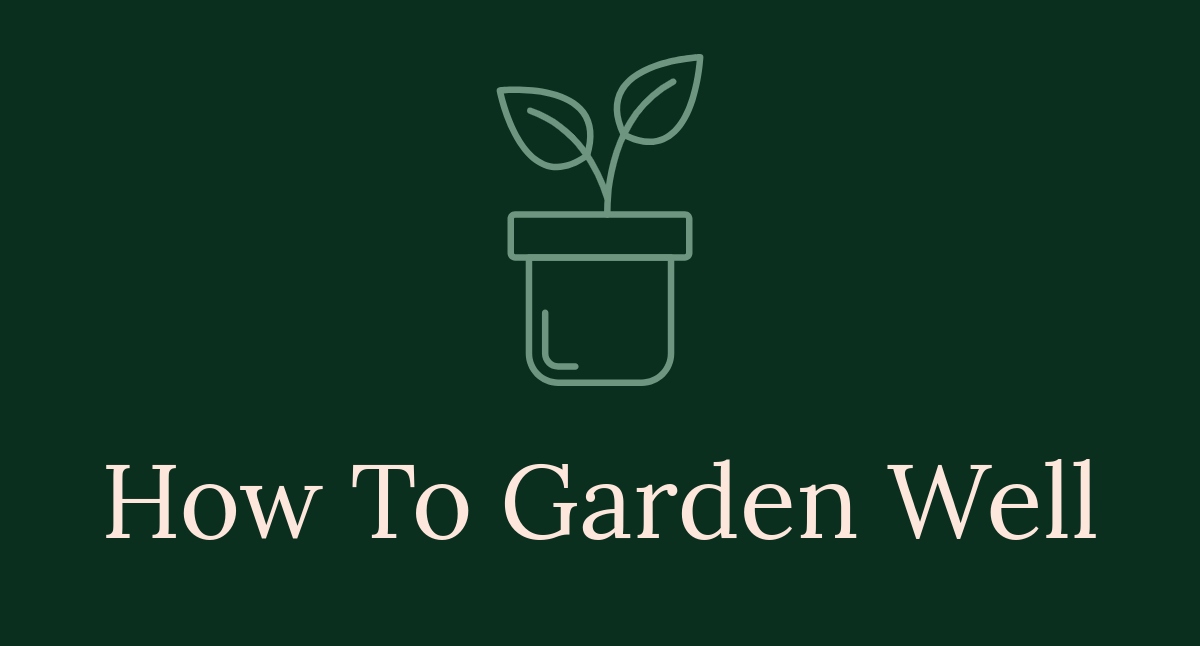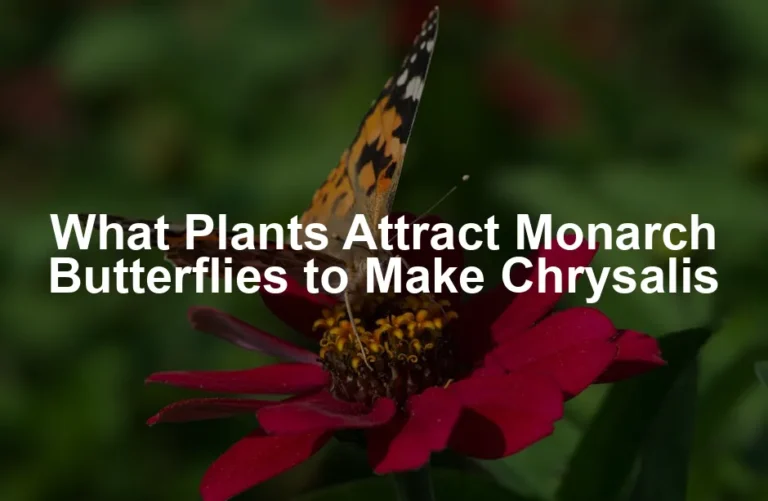

Oklahoma Flower Seeds to Plant: Sun and Shade
Introduction
When it comes to gardening in Oklahoma, choosing the right flower seeds can be a delightful yet daunting task. With the state’s unique climate, which oscillates between blistering heat and occasional shade, understanding which flowers thrive in sun or shade is key to a vibrant garden. Whether you’re looking to brighten up your sunny backyard or add color to a shaded corner, this guide has you covered. Get ready to dig deep into the botanical wonders of Oklahoma and discover the perfect flower seeds for your garden!
And speaking of digging, don’t forget the importance of tools! A reliable Garden Trowel can make planting and transplanting a breeze, ensuring your hands stay clean and your plants stay happy!
Summary
In the journey of transforming your Oklahoma garden, understanding the diverse range of flower seeds suitable for both sun and shade is essential. From sun-loving annuals like the striking Blanket Flower and cheerful Zinnias to shade-tolerant perennials like the enchanting Hellebore, there’s a perfect plant for every corner of your garden. Not only do these plants beautify your landscape, but many are also drought-resistant and attract pollinators, contributing to the ecosystem’s health. With a robust selection from native wildflowers to collector’s favorites, this guide will pave your way to a flourishing garden. Dive into the specifics of each flower, learn about optimal planting conditions, and discover maintenance tips to ensure your plants thrive year after year.
Also, don’t underestimate the power of Organic Compost to enrich your soil! It’s like a five-star meal for your plants, ensuring they have all the nutrients they need to thrive.
Choosing the Right Flower Seeds for Oklahoma
Selecting flowers suited to Oklahoma’s climate is crucial. The state experiences hot summers and cold winters, making it essential to choose resilient plants. Here’s what to consider:
- Soil Conditions: Most Oklahoma soils are clay-based, which can affect drainage. It’s vital to amend the soil with organic matter. This will improve aeration and drainage, making it more suitable for various flower types.
- Light Exposure: Different plants thrive under varying light conditions. Full sun flowers, like the stunning Mexican Sunflower, bask in direct sunlight, while shade-loving plants, such as the delicate Hellebore, prefer cooler, shaded areas.
- Drought Tolerance: With Oklahoma’s unpredictable rainfall, drought-resistant flowers are a smart choice. Plants like the resilient Black-eyed Susan and Blanket Flower can withstand dry spells, ensuring your garden remains vibrant even during summer droughts.
- Oklahoma Proven Program: For reliable selections, check the Oklahoma Proven program. This initiative highlights plants that perform well in Oklahoma’s unique environment. They focus on native species, ensuring lower maintenance and better adaptability.
In conclusion, understanding these factors will guide you toward selecting the best flower seeds for your Oklahoma garden. With the right choices, your garden will flourish, adding beauty and joy to your outdoor space!
And don’t forget to protect those blooms with some Organic Fertilizer. It’s like a spa day for your flowers, helping them bloom beautifully while being kind to the environment!
Flowers for Full Sun
When it comes to vibrant blooms that thrive under the Oklahoma sun, annuals and perennials alike have plenty to offer. Here’s a look at some of the most popular flowers that are not just pretty but also hardy enough to withstand the Oklahoma heat.
Popular Annuals
- Blanket Flower (Gaillardia) The blanket flower, Oklahoma’s state wildflower, is a showstopper. With its fiery red and yellow petals, it’s hard to resist. This beauty loves full sun and can handle poor soil conditions. For best results, plant in well-drained soil. Water regularly until established, then enjoy its drought tolerance. Deadhead spent blooms to encourage continuous flowering from spring to fall. Plus, you can start your garden off right with Blanket Flower Seeds for a stunning display!
- Zinnia (Zinnia spp.) Zinnias come in a rainbow of colors, making them a favorite for many gardeners. They are easy to grow and perfect for adding pops of color to your garden. Varieties range from the compact ‘Profusion’ to the towering ‘State Fair’. They thrive in full sun and well-drained soil. Keep them watered, especially in dry spells, and don’t forget to remove dead flowers for a longer blooming season. Grab some Zinnia Seeds to brighten your garden!
- Mexican Sunflower (Tithonia) The Mexican sunflower boasts large, orange blooms that attract butterflies and bees like a magnet. Plant these in full sun with well-drained soil. They love heat and can grow quite tall, adding a dramatic flair to your garden. Best of all, they’re drought-resistant once established. To keep them blooming into the fall, remove spent flowers regularly. Don’t forget to add some Mexican Sunflower Seeds for a vibrant display!
Popular Perennials
- Echinacea (Coneflower) These stunning perennials are not just pretty faces; they’re also fantastic for pollinators. Echinacea plants are hardy and thrive in full sun. They prefer well-drained soil and are drought-tolerant once established. Regular deadheading will promote more blooms throughout the season, making them a must-have for any garden. Don’t forget to pick up some Echinacea Seeds to attract those pollinators!
- Black-eyed Susan (Rudbeckia) With their sunny yellow petals and dark centers, black-eyed Susans are a cheerful addition to any garden. They thrive in full sun and tolerate a variety of soil conditions. Plant them in groups for the best visual impact. Water them during dry spells, and they’ll reward you with blooms from summer to fall. You can easily find Black-eyed Susan Seeds for a sunny garden!
- Coreopsis (Coreopsis spp.) Coreopsis, or tickseed, offers a delightful array of colors and forms. They bloom profusely in full sun and are drought-tolerant, making them perfect for Oklahoma’s climate. Plant in well-drained soil and enjoy their cheerful faces from spring through fall. Regular deadheading will keep them looking fresh and encourage more flowers. Give your garden a boost with Coreopsis Seeds!
Tips for Planting in Full Sun
To ensure your sun-loving flowers thrive, start with proper soil preparation. Test your soil and amend it with organic matter if necessary. This improves drainage and nutrient availability. When planting, space flowers according to their mature size to prevent overcrowding.
Water deeply but infrequently to encourage deep root growth. Early morning is the best time to water, reducing evaporation and fungal diseases. Mulching around your plants helps retain moisture and suppress weeds. Consider using Mulch to keep your soil moist and your weeds at bay!
The best planting seasons for these flowers are early spring and fall. This gives them ample time to establish before facing the extreme heat of summer. With these tips and the right flowers, your garden will be a sun-soaked paradise bursting with color.
Flowers for Partial Shade
Gardening in Oklahoma can be a delightful experience, especially when it comes to selecting flowers for those tricky partial shade areas. Lucky for us, there’s a plethora of beautiful blooms that not only add character but thrive in less-than-full-sun conditions. Let’s dive into some of the best options!
Popular Annuals
- Coleus (Plectranthus) Coleus plants are the fashionistas of the garden world. With their vibrant foliage, they come in colors like lime green, deep burgundy, and even pink. These beauties love the shade but can tolerate some sun. Keep them well-watered, especially during the hotter months. Pinch back their stems to encourage bushier growth and more leaves, making for a stunning display. These plants are perfect for container gardening or as a background for other flowers. Their adaptability and striking appearance make them a must-have for any shaded area. Grab some Coleus Seeds to spice up your shade garden!
- Wishbone Flower (Torenia) The Wishbone Flower, often referred to as Torenia, is a petite annual that loves to flaunt its unique, wishbone-shaped flowers. Available in shades of blue, purple, and white, they bloom from spring until frost. They thrive in moist, well-drained soil and prefer partial shade. For optimal growth, deadhead regularly, and don’t let them dry out. These flowers are perfect for hanging baskets or as a ground cover, creating a lively carpet of color in shaded spots. You can find Wishbone Flower Seeds to add some charm to your garden!
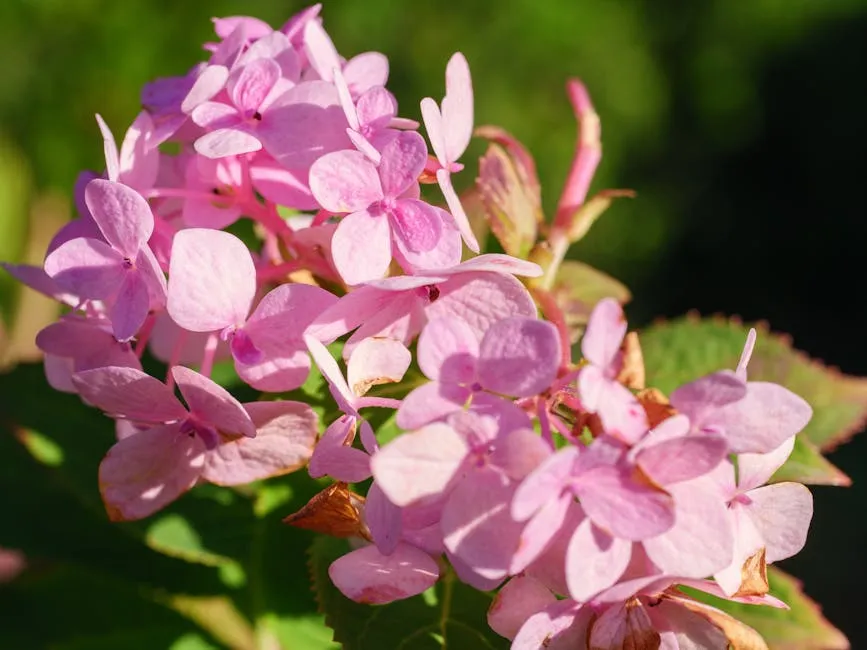
Popular Perennials
- Hellebore (Helleborus) Hellebores, also known as Lenten roses, are the perennial champions of shade. Blooming in late winter to early spring, they offer beautiful nodding flowers in colors ranging from white to deep purple. These evergreen plants are perfect for adding interest during the dreary winter months. Plant them in well-drained, rich soil for best results. They thrive with minimal care and are resistant to pests, making them an excellent choice for gardeners who prefer low-maintenance options. With their unique blooms, Hellebores add a touch of elegance to any garden. Check out Hellebore Seeds for a stunning display!
- Astilbe (Astilbe) Astilbe is a perennial that loves to show off its feathery plumes. Available in a variety of colors like pink, red, and white, these plants provide a lovely contrast against darker foliage. They thrive in rich, moist soil and prefer partial to full shade. Water regularly to keep the soil consistently moist, especially during dry spells. Astilbe is also a great choice for attracting pollinators, making your garden a lively hub of activity. With their dramatic blooms, they can be a focal point in any shady garden space. Don’t miss out on getting some Astilbe Seeds!
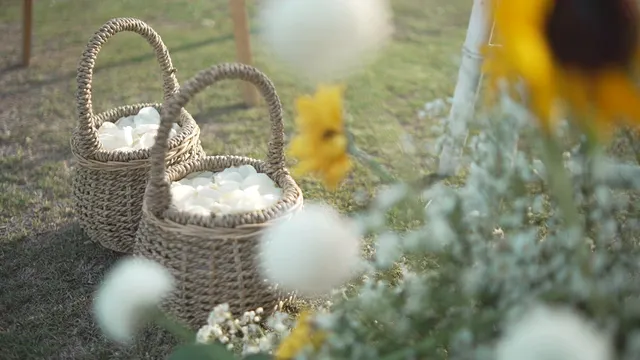
Tips for Planting in Shade
When planting in shady areas, understanding the soil type is crucial. Well-drained, rich soil is essential for most shade-loving plants. Consider amending your soil with organic matter like compost to enhance its nutrient content and drainage capabilities.
Watering needs can vary, but generally, shade plants require consistent moisture. Be sure to check the soil regularly; if it feels dry about an inch down, it’s time to water. Mulching can also help retain moisture and suppress weeds, creating a healthier environment for your plants. Consider using Mulch to keep your soil moist and your weeds at bay!
Lastly, light conditions are vital. While full shade plants may thrive in low-light areas, many prefer dappled sunlight. Observing how light moves through your garden throughout the day will help you make the best choices for plant placement.
With the right selection of flowers and proper care, your shaded garden can be as vibrant and colorful as those sun-soaked spaces, all while providing a tranquil retreat from the heat. Happy planting!
Creating a Beautiful Garden
Designing a garden that harmoniously blends both sun and shade plants can transform your outdoor space into a picturesque escape. Here are some tips to help you achieve that perfect balance.
Start with a solid plan. Consider the layout of your garden and how sunlight hits different areas throughout the day. Use taller sun-loving plants at the back and shorter shade-tolerant varieties up front. This creates a tiered effect, ensuring that all plants receive adequate light.
Color combinations play a crucial role in garden design. Pair vibrant sunflowers with the soft hues of Hellebores or Astilbe to create striking contrasts. Mixing textures can also add depth; consider combining the feathery plumes of Astilbe with the broad leaves of Coleus.
Don’t forget about seasonal blooming! Choose a variety of plants that blossom at different times. This ensures your garden remains lively and colorful from spring through fall. For instance, Hellebores will bloom early in the year, while summer favorites like Zinnias can take over later. For a well-rounded garden experience, think about adding a Garden Journal to track your planting and blooming schedules!
Finally, add pathways or borders using stone, mulch, or decorative edging. This not only defines spaces but also invites exploration. By thoughtfully designing your garden with both sun and shade plants, you’ll create an inviting atmosphere that showcases the beauty of Oklahoma’s floral diversity. Happy gardening!

Maintenance Tips for Oklahoma Gardens
Maintaining a beautiful garden in Oklahoma is a rewarding endeavor. With the right practices, you can ensure your flowers thrive, whether they bask in the sun or soak up the shade. Here are some essential maintenance tips to keep your Oklahoma garden flourishing.
- Watering Schedule Oklahoma’s climate can swing from drought to downpours. It’s crucial to establish a consistent watering schedule. For sun-loving flowers, water deeply but less frequently. Early morning is best, allowing plants to soak up moisture before the heat of the day. Aim for at least an inch of water per week. For shade-tolerant plants, monitor soil moisture. They may require less frequent watering, especially during cooler months.
- Pest Control Pests can wreak havoc on your garden. Regularly inspect your plants for signs of trouble. A few aphids here and there? Try a blast of water to dislodge them. For more stubborn pests, natural solutions like neem oil can be effective. Introduce beneficial insects like ladybugs and lacewings, which feast on common pests. Avoid chemical pesticides whenever possible; they can harm beneficial insects and disrupt the ecosystem. For more detailed pest management strategies, check out the article on organic pest control methods for tomato plants. Additionally, consider using an Organic Pest Control Spray to keep your plants safe from pests!
- Seasonal Care Oklahoma’s seasons demand different care strategies. In spring, prepare your garden by removing debris and checking for frost damage. This is also the perfect time to fertilize with a balanced, slow-release fertilizer. During the summer, ensure consistent watering and mulch around plants to retain moisture and suppress weeds. Fall is the season for cleanup. Cut back perennials and remove dead annuals to prevent diseases. Finally, consider planting bulbs for a stunning spring display.
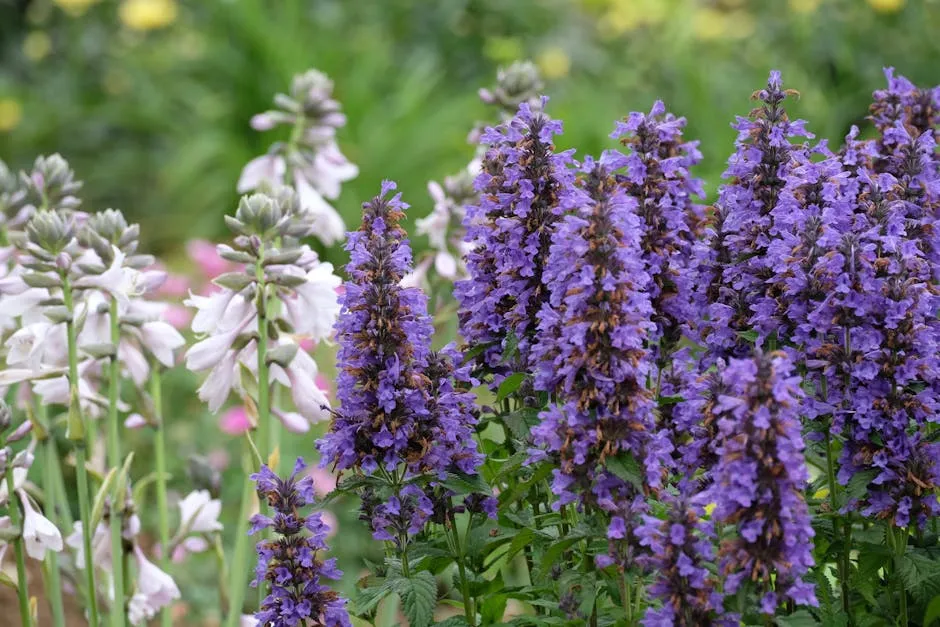
By following these maintenance tips, your Oklahoma garden will thrive throughout the seasons. Happy gardening!
Conclusion
Oklahoma’s diverse climate offers a unique opportunity for gardeners to cultivate a stunning array of flowers, whether basking in the sun or thriving in the shade. By understanding the specific needs of each plant and selecting the right seeds for your garden, you can create a blooming paradise that not only beautifies your space but also supports local wildlife. Don’t forget to document your gardening journey with a Garden Journal to track your progress and successes!
FAQs
What are the best flowers to plant in full sun in Oklahoma?
Oklahoma’s sunny skies are perfect for vibrant blooms! For full sun, here are some top contenders: – **Blanket Flower (Gaillardia)**: This state wildflower shines with fiery red and yellow petals. It thrives in poor soil and loves hot, dry conditions. Talk about a show-off! – **Zinnias**: These cheerful flowers come in a kaleidoscope of colors. They are easy to grow and perfect for adding a burst of joy to any garden. Just remember to deadhead for more blooms! – **Echinacea (Coneflower)**: A favorite among pollinators, Echinacea is not just beautiful; it’s drought-resistant too. These perennials are hardy and will keep you smiling through the summer.
Can I grow flowers in full shade?
Absolutely! You can have a colorful garden even in shaded areas. Check out these shade-tolerant options: – **Hellebore**: Also known as Lenten rose, this beauty blooms in winter, offering delicate flowers that brighten up the dreariest days. They thrive in well-drained soil without much fuss. – **Astilbe**: With feathery plumes of color, Astilbe loves moist soil and partial shade. They not only add beauty but also attract pollinators. It’s a win-win!
How do I prepare my garden soil for planting?
Soil preparation is key to a thriving garden! Here are some steps to ensure your soil is ready for planting: – **Test your soil**: Knowing the pH and nutrient levels will help you determine what amendments you might need. – **Amend with organic matter**: Incorporate compost or well-rotted manure to improve soil structure, drainage, and nutrient content. Your plants will thank you! – **Remove debris**: Clear any weeds or old plant material to create a clean slate for your new blooms.
When is the best time to plant flower seeds in Oklahoma?
Timing is everything! In Oklahoma, consider these strategies: – **Spring planting**: Once the danger of frost has passed, usually around mid-April, is ideal. This gives your seeds the warm soil they crave for germination. – **Fall planting**: For wildflowers, planting after the first frost can be beneficial. This allows seeds to undergo natural stratification, resulting in vibrant blooms come spring.
Are there flowers that thrive in drought conditions?
Yes, Oklahoma’s heat can be tough, but many flowers love the challenge! Here are a few drought-resistant varieties: – **Black-eyed Susan**: These cheerful yellow flowers are not only stunning but also tough as nails. They can handle dry spells like a champ! – **Blanket Flower**: Another drought lover, this perennial is perfect for Oklahoma’s climate. It blooms beautifully with minimal water once established. – **Echinacea**: This powerhouse is not just a pretty face; it can withstand dry conditions, making it a favorite for low-maintenance gardens.
Please let us know what you think about our content by leaving a comment down below!
Thank you for reading till here 🙂
All images from Pexels
